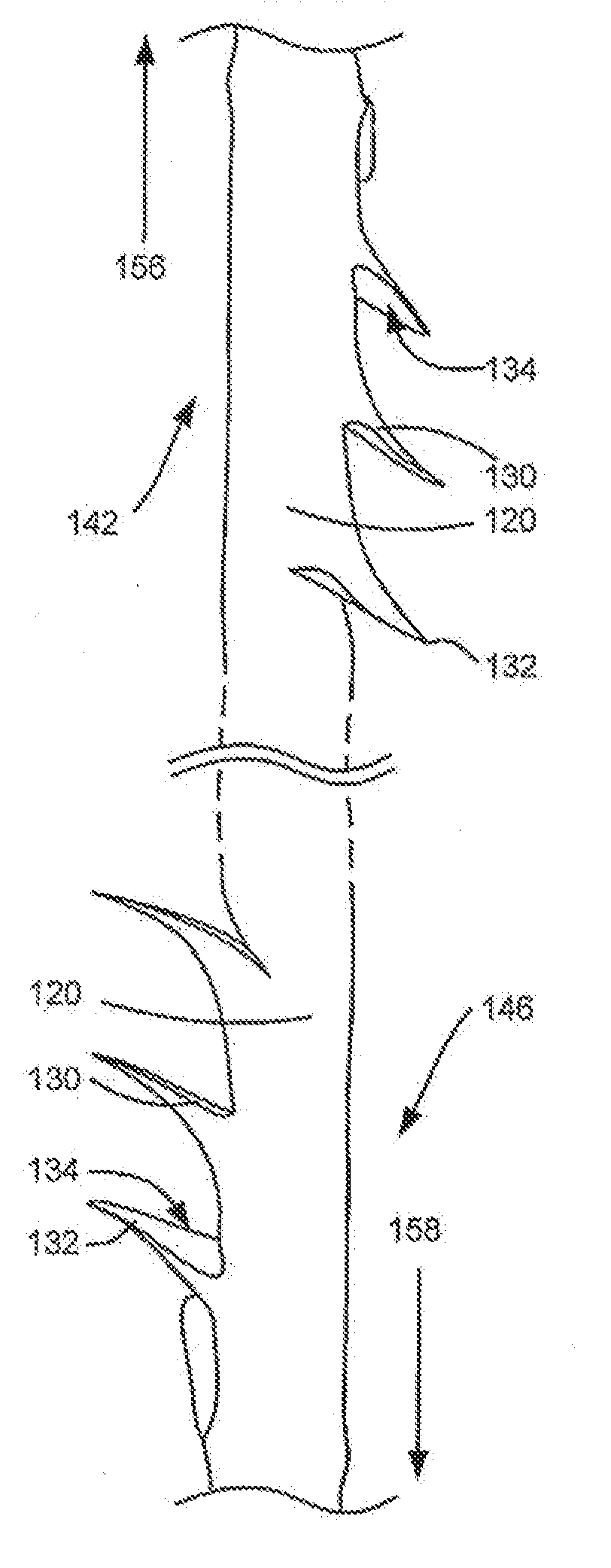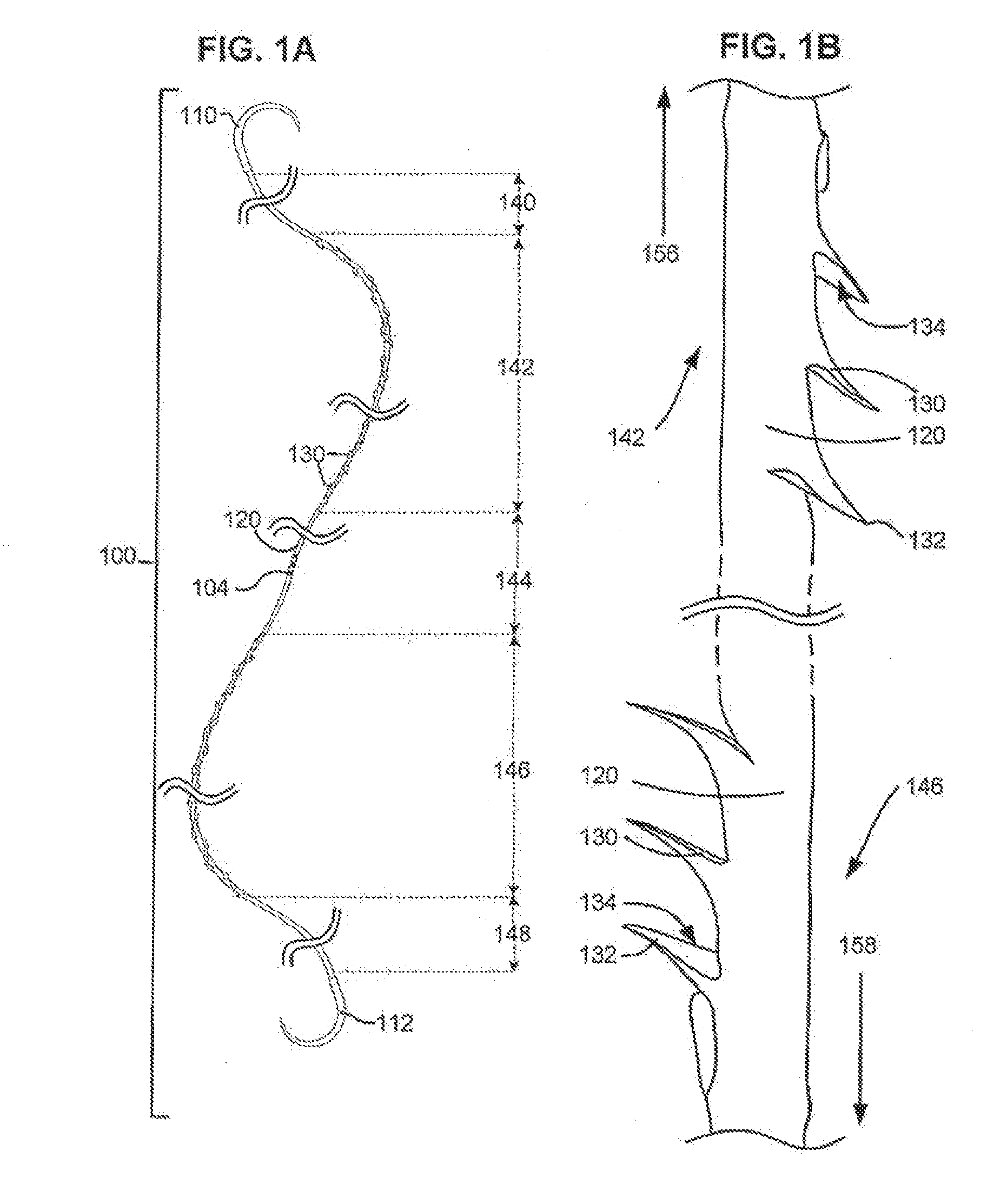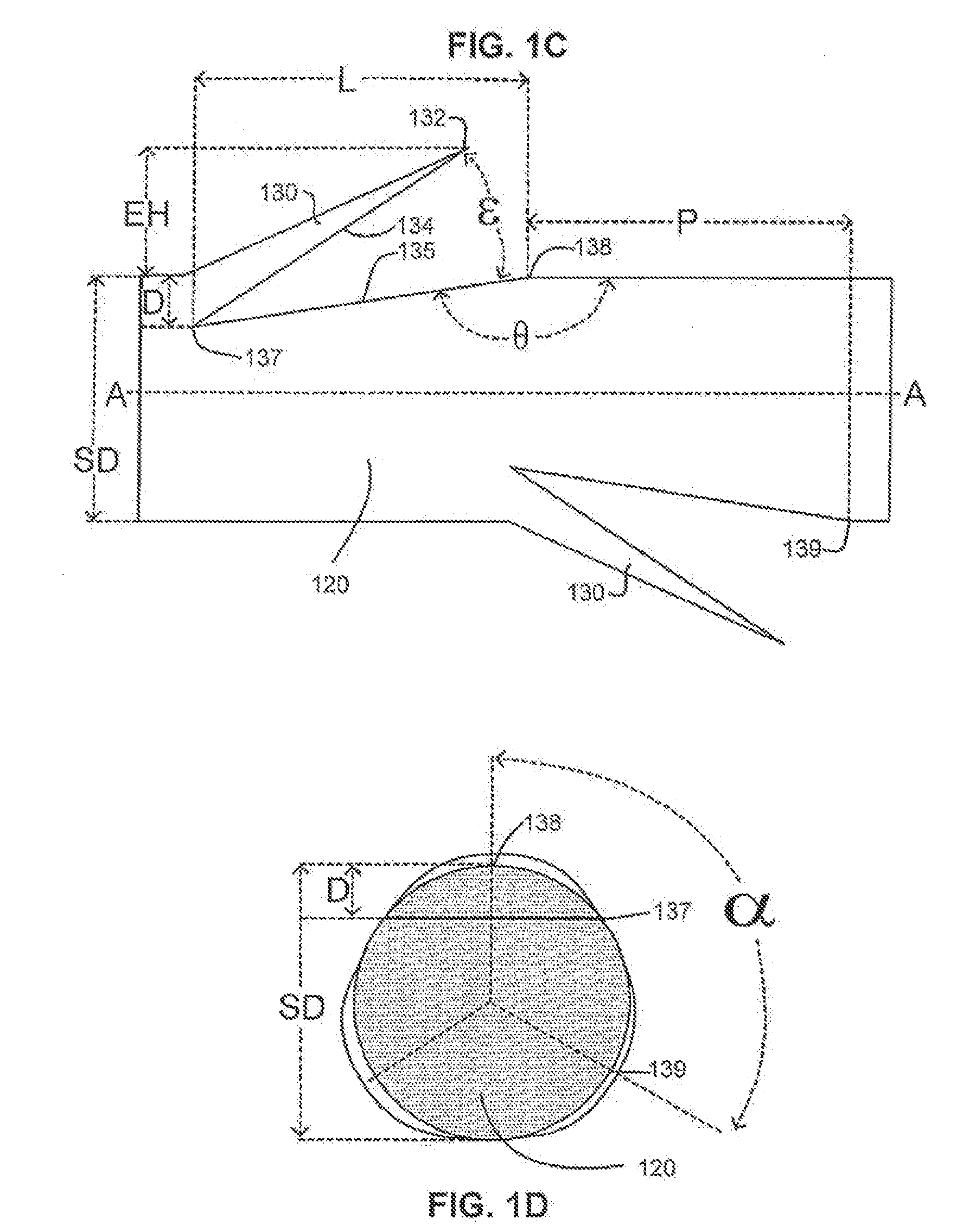High-Density Self-Retaining Sutures, Manufacturing Equipment and Methods
a self-retaining suture and manufacturing equipment technology, applied in the field of self-retaining sutures and sutures, can solve the problems of increased risk of dehiscence or rupture at the surgical wound, time-consuming knot tying, and laborious knot tying, so as to enhance the maximum load, enhance the ability to anchor into the surrounding tissue, and enhance the effect of tissue holding capacity
- Summary
- Abstract
- Description
- Claims
- Application Information
AI Technical Summary
Benefits of technology
Problems solved by technology
Method used
Image
Examples
example a
Lot 36
[0180]FIG. 8A shows an image of a self-retaining suture 800a made utilizing the cutting apparatus previously described. Self-retaining suture 800a was formed by cutting retainers 802a in a quadra-helix pattern (n=4) into a polypropylene suture thread 804a of USP 2-0 (300 μm nominal diameter) using a 28 mm diameter circular blade. Four retainers were cut at each axial position on the suture—the suture was rotated 90° between each cut. The suture was then translated axially by 1000 μm and rotated 45° before commencing cutting of the next four retainers. To form the retainers 802a on the polypropylene suture thread 804a; the parameters of the cutting assembly were set as follows: blade angle 38.89°, plow angle 10°, cutting stage angle 78°, depth of cut 50 μm, and pitch 1000 μm. The resulting retainer length was 359 μm at a density of approximately 102 retainers per inch or 1.20 retainers per suture diameter in axial length. The retainer aspect ratio (retainer length / cut depth) wa...
example b
Lot 37
[0181]FIG. 8B shows an image of a self-retaining suture 800b made utilizing the cutting apparatus previously described. Self-retaining suture 800b was formed by cutting retainers 802b in a quadra-helix pattern (n=4) into a polypropylene suture thread 804b of USP 2-0 (300 μm nominal diameter) using a 28 mm diameter circular blade. Four retainers were cut at each axial position on the suture—the suture was rotated 90° between each cut. The suture was then translated axially by 500 μm and rotated 45° before commencing cutting of the next four retainers. To form the retainers 802b on the polypropylene suture thread 804b, the parameters of the cutting assembly were set as follows: blade angle 38.89°, plow angle 10°, cutting stage angle 78°, depth of cut 50 μm, and pitch 500 μm. The resulting retainer length was 331 μm at a density of approximately 204 retainers per inch or 2.4 retainers per suture diameter in axial length. The retainer aspect ratio was approximately 6.6. The result...
example c
Lot 38
[0182]FIG. 8C shows an image of a self-retaining suture 800c made utilizing the cutting apparatus previously described. Self-retaining suture 800c was formed by cutting retainers 802c in a quadra-helix pattern (n=4) into a polypropylene suture thread 804c of USP 2-0 (300 μm nominal diameter) using a 28 mm diameter circular blade. Four retainers were cut at each axial position on the suture—the suture was rotated 90° between each cut. The suture was then translated axially by 440 μm and rotated 45° before commencing cutting of the next four retainers. To form the retainers 802c on the polypropylene suture thread 804c, the parameters of the cutting assembly were set as follows: blade angle 38.89°, plow angle 8°, cutting stage angle 78°, depth of cut 50 μm, and pitch 440 μm. The resulting retainer length was 375 μm at a density of 230 retainers per inch or 2.73 retainers per suture diameter in axial length. The retainer aspect ratio was approximately 7.5. The resulting ratio of c...
PUM
| Property | Measurement | Unit |
|---|---|---|
| diameter | aaaaa | aaaaa |
| diameter | aaaaa | aaaaa |
| diameter | aaaaa | aaaaa |
Abstract
Description
Claims
Application Information
 Login to View More
Login to View More - R&D
- Intellectual Property
- Life Sciences
- Materials
- Tech Scout
- Unparalleled Data Quality
- Higher Quality Content
- 60% Fewer Hallucinations
Browse by: Latest US Patents, China's latest patents, Technical Efficacy Thesaurus, Application Domain, Technology Topic, Popular Technical Reports.
© 2025 PatSnap. All rights reserved.Legal|Privacy policy|Modern Slavery Act Transparency Statement|Sitemap|About US| Contact US: help@patsnap.com



